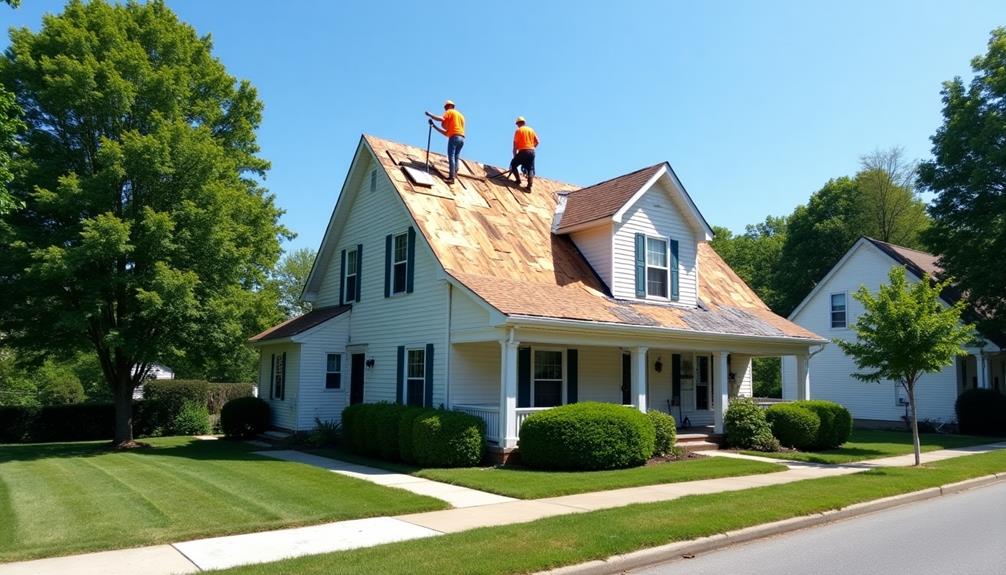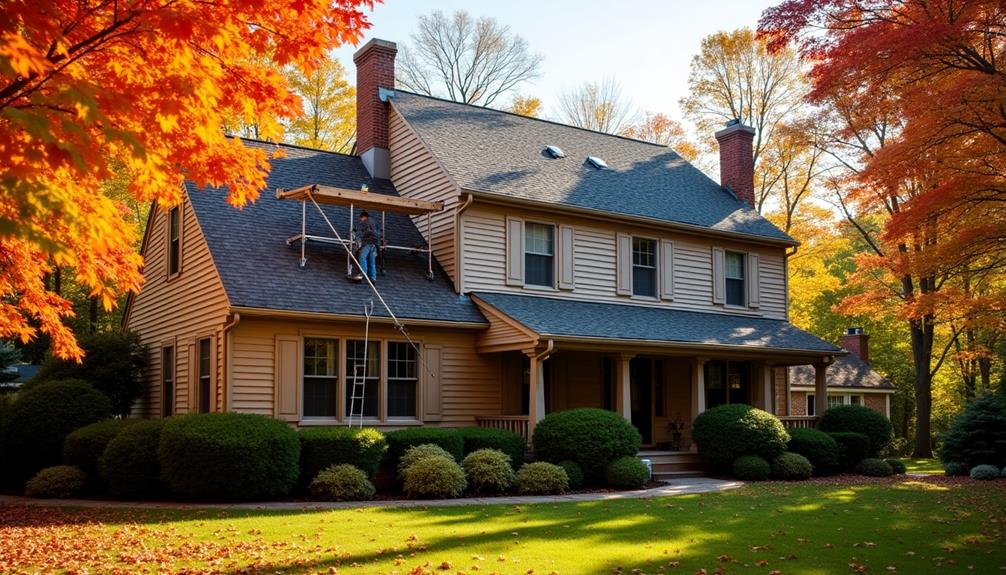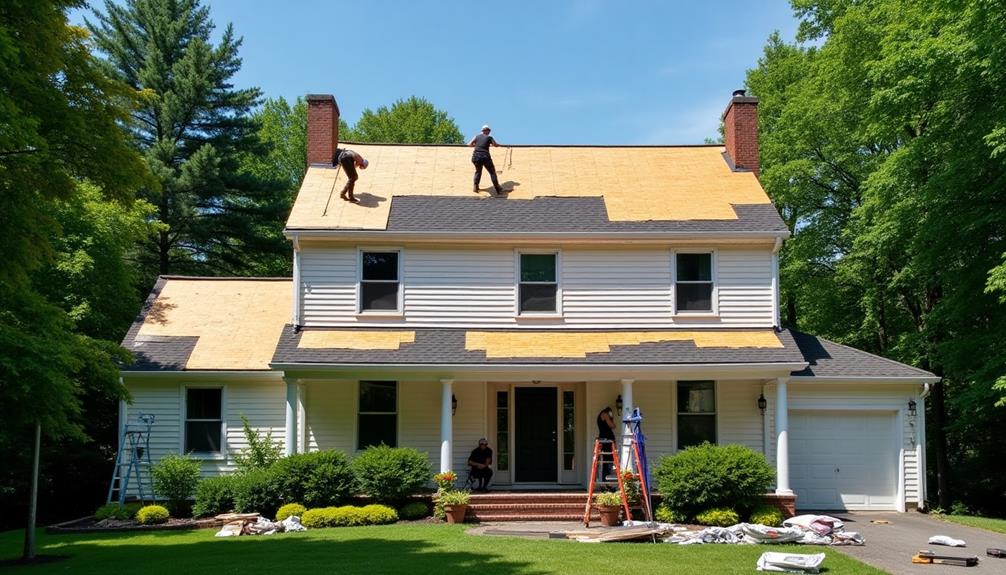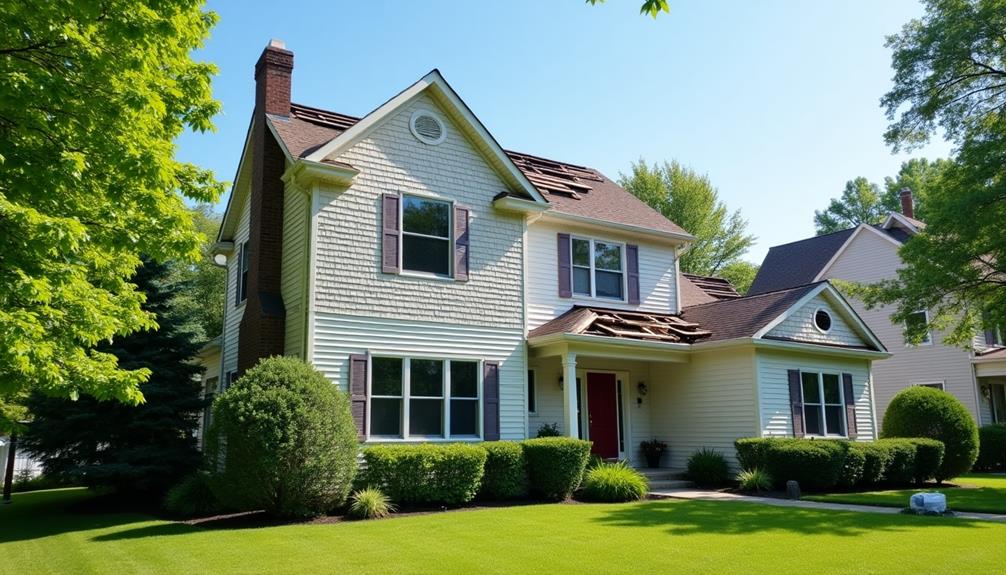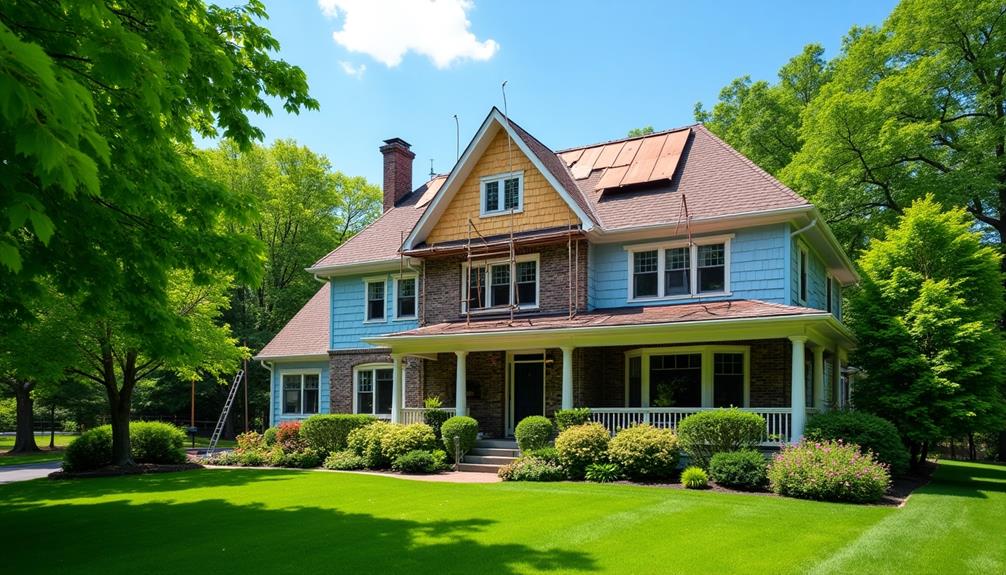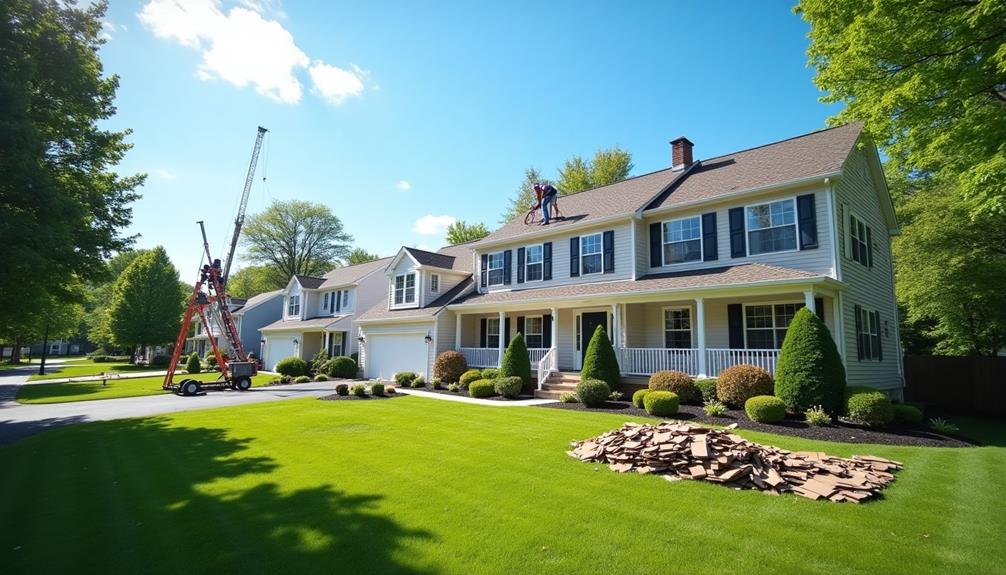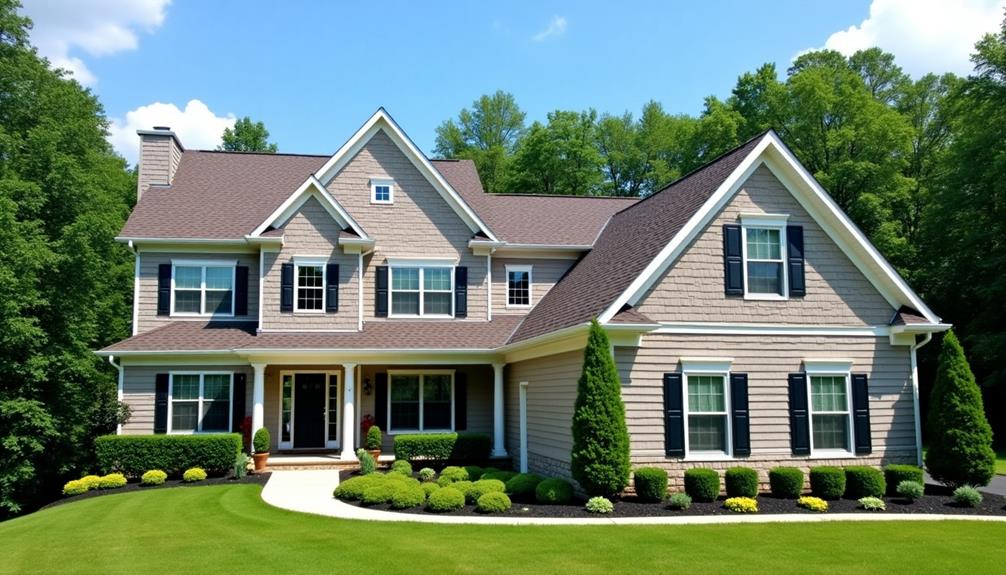If you're considering a roof replacement in Lower Township, NJ, it's crucial to assess the condition of your current roof. Look for signs like missing shingles, leaks, or frequent repairs. Opting for a new roof can enhance energy efficiency, increase aesthetic appeal, and ultimately save on future repair costs. Common materials include asphalt shingles for affordability, metal for durability, and eco-friendly options for sustainability. Always choose a reputable contractor to ensure quality installation and check local regulations for permits. Understanding this process can guide your decision, illuminating the best choices for your home's longevity and comfort.
Signs You Need a Roof Replacement
When it comes to maintaining your home's integrity, recognizing the signs you need a roof replacement is crucial. A roof's lifespan typically ranges from 20 to 30 years, depending on the materials used and local weather impacts. If your roof is nearing this age, it's vital to assess its condition regularly.
Look for visible signs of wear, such as missing shingles, curling edges, or granule loss. These indicators often suggest that your roof's protective layer is compromised. If you notice water stains on your ceilings or walls, it could signal leaks that necessitate immediate attention.
Additionally, check for sagging or uneven areas, which might indicate structural damage requiring a complete roof replacement.
Another factor to consider is the frequency of repairs. If you find yourself frequently fixing leaks or replacing shingles, it may be more cost-effective to invest in a new roof.
Furthermore, extreme weather events, such as heavy storms or hail, can accelerate roof deterioration, making it essential to evaluate your roof's condition after such occurrences. By staying vigilant and proactive, you can ensure your home remains protected from the elements.
Benefits of Timely Replacement
Addressing the signs that indicate a need for roof replacement can lead to significant long-term benefits.
One of the most immediate advantages is improved energy efficiency. A new roof often utilizes advanced insulation materials and technologies, which can help regulate your home's temperature. This means lower heating and cooling costs, directly impacting your monthly bills.
Additionally, a timely roof replacement enhances your home's aesthetic appeal. An updated roof not only revitalizes the overall look of your property but can also increase its market value. Potential buyers are often willing to pay more for a home that doesn't require immediate repairs, making your investment worthwhile.
Moreover, replacing your roof preemptively can prevent more substantial issues down the line, such as water damage or structural problems.
Common Roofing Materials
Choosing the right roofing material is crucial for ensuring the longevity and performance of your roof. Among the most popular options is asphalt shingles, known for their affordability and ease of installation.
However, if you're looking for durability, consider metal roofing. Metal roofs can last over 50 years, resist extreme weather, and require minimal maintenance.
If sustainability is a priority for you, eco-friendly options like recycled rubber or solar tiles are worth considering. These materials not only reduce environmental impact but can also improve energy efficiency in your home.
Clay and concrete tiles are other durable choices that offer a distinct aesthetic, particularly suited for Mediterranean-style homes. They provide excellent insulation but can be heavy, requiring a sturdy underlying structure.
Lastly, wood shakes and shingles deliver a natural look, but they need regular maintenance to prevent rot and insect damage.
Ultimately, the best material for your roof depends on your specific needs, budget, and local climate. Assessing these factors will guide you in selecting the right roofing material to protect your home for years to come.
Cost Factors to Consider
When considering roof replacement, it's essential to evaluate how material selection impacts overall costs.
The type of roofing material you choose can significantly influence both the price and longevity of your roof.
Additionally, labor and installation expenses will vary based on the complexity of the project and local market rates, so it's important to factor these into your budget.
Material Selection Impact
Material selection plays a crucial role in the overall cost of roof replacement in Lower Township, NJ. Your choice of materials directly influences not only the upfront investment but also long-term maintenance and sustainability considerations.
For instance, while asphalt shingles are generally more affordable, options like metal or tile may offer greater durability and energy efficiency, thus reducing costs over time.
When selecting materials, you'll also want to account for aesthetic preferences. Different materials can dramatically change the appearance of your home, so it's essential to balance beauty with practicality.
While you might be tempted to choose the least expensive option, consider how the material complements your home's architecture and the surrounding environment.
Additionally, some materials may contribute to higher energy efficiency, which can lead to lower utility bills and increased comfort. Investing in sustainable roofing materials not only supports environmental goals but may also qualify you for tax incentives or rebates.
Ultimately, understanding the impact of material selection will enable you to make informed decisions that align with your budget, aesthetic desires, and sustainability goals.
Labor and Installation Costs
Labor and installation costs are significant factors that can substantially impact the overall expense of roof replacement in Lower Township, NJ. When budgeting for your project, you need to consider the labor rates specific to your area, which can vary based on the contractor's expertise and the complexity of the installation techniques used.
High-quality installation techniques are crucial for ensuring the longevity and performance of your new roof. Skilled labor may come at a premium, but it often pays off in the form of enhanced durability and fewer future repairs.
Additionally, reputable contractors typically offer roofing warranties, which can further safeguard your investment. A strong warranty can alleviate concerns about potential workmanship issues that may arise after installation.
It's also essential to factor in the time required for installation. Delays due to inclement weather or unforeseen complications can lead to increased labor costs.
Therefore, obtaining detailed estimates that outline both labor and potential extra costs is vital for making informed decisions. By carefully evaluating these labor and installation costs, you can better manage your budget and ensure a successful roof replacement project.
Choosing a Roofing Contractor
Selecting the right roofing contractor can significantly impact the success of your roof replacement project in Lower Township, NJ. You should start by evaluating contractor qualifications, ensuring they've the necessary licenses, insurance, and certifications. A knowledgeable contractor will provide evidence of their experience and expertise in roofing materials and installation techniques.
Next, consider their project timelines. A reliable contractor will provide a clear schedule, outlining start and completion dates, as well as any contingencies that could affect the timeline. Communication is key; make sure they're responsive and open to discussing any concerns you may have.
Request multiple estimates to compare not just prices but also the scope of work included. Look for contractors who offer warranties on both materials and labor, as this indicates confidence in their work.
Additionally, check online reviews and ask for references from past clients to gauge their reputation.
The Replacement Process Explained
When embarking on a roof replacement in Lower Township, NJ, understanding the process can help set your expectations and ensure a smoother experience. The replacement process typically begins with an initial inspection, where the contractor assesses the condition of your existing roof and discusses options with you. This stage is crucial for establishing a realistic roofing timeline.
Once you've selected materials and finalized the contract, the contractor will schedule the work. On the day of installation, they'll remove the old roofing material, inspect the underlying structure, and make any necessary repairs.
Afterward, the new roof is installed, ensuring proper ventilation and waterproofing measures are in place. Throughout the project, communication is key; your contractor should keep you informed about progress and any unexpected issues.
Once the installation is complete, you'll receive documentation of the work, including your replacement warranty, which is essential for protecting your investment. This warranty typically covers both materials and workmanship, providing peace of mind for years to come.
Maintenance Tips Post-Replacement
After replacing your roof, it's essential to implement a regular maintenance routine to ensure its longevity.
You should schedule periodic inspections, clean your gutters and drains, and address any minor repairs promptly.
These proactive steps will help prevent more significant issues down the line and protect your investment.
Regular Inspections and Maintenance
To ensure the longevity and performance of your new roof in Lower Township, NJ, conducting regular inspections and maintenance is essential. Regular inspections help you identify minor issues before they escalate, safeguarding your investment and extending the roof lifespan. Aim for seasonal inspections, ideally in spring and fall, to catch any damage from harsh winter weather or summer storms.
During your inspections, look for signs of wear, such as cracked or missing shingles, rusted flashing, or any sagging areas. Pay attention to the roof's drainage system, ensuring water flows freely and doesn't pool. This prevents leaks and structural damage that can compromise your roof's integrity.
In addition to inspections, schedule maintenance tasks like resealing joints and checking ventilation systems. Proper ventilation reduces heat buildup and moisture accumulation, further enhancing your roof's lifespan.
Keeping an eye on overhanging branches is also crucial; trim them back to prevent unnecessary abrasion and debris accumulation.
Clean Gutters and Drains
Keeping your gutters and drains clean is crucial for maintaining your new roof in Lower Township, NJ. Clogged gutters can lead to water pooling on your roof, causing damage that could shorten its lifespan. Regular gutter maintenance ensures that rainwater flows freely, preventing potential leaks and structural issues.
Here's a quick reference table to help you with gutter and drain upkeep:
| Task | Frequency |
|---|---|
| Inspect for debris | Monthly |
| Clean gutters | Twice a year |
| Check downspouts | After heavy rain |
For effective drain cleaning, make sure to remove leaves, twigs, and other debris regularly. Use a garden trowel or a scoop to clear larger obstacles, and consider a hose to flush out smaller particles. If you notice any signs of blockage, act promptly to address them.
Address Minor Repairs Promptly
Regular gutter maintenance lays the groundwork for a well-functioning roof, but it's just as important to address minor repairs promptly once your roof replacement is complete. Neglecting small issues can lead to larger problems, making preventative maintenance crucial for the longevity of your new roof.
Start by regularly inspecting your roof for signs of wear, such as missing shingles or small leaks. If you notice any damage, use appropriate repair techniques to fix them immediately. For instance, replacing a few shingles is a simple task that can prevent water infiltration, while sealing small leaks can save you from costly repairs down the line.
Also, pay attention to flashing around chimneys and vents; even minor gaps can lead to significant water damage. Ensure that any penetrations in your roof are adequately sealed and caulked.
Incorporating these preventative maintenance practices into your routine will help you maintain the integrity of your roof, enhancing its lifespan and performance.
Local Regulations and Permits
Navigating the local regulations and permits for roof replacement in Lower Township, NJ, is crucial for homeowners. Understanding zoning laws and permit requirements can save you time and prevent potential fines. Before starting your project, check with the local building department to ensure compliance.
Here's a quick reference table summarizing key regulations:
| Regulation | Details |
|---|---|
| Zoning Laws | Check if your property is in a residential or commercial zone. Restrictions may apply. |
| Permit Requirements | Most roof replacements require a permit. Obtain it before commencing work. |
| Inspection Requirements | Final inspections are often necessary to ensure compliance with local codes. |
| Contractor Licensing | Ensure your contractor is licensed and insured to perform work in Lower Township. |

